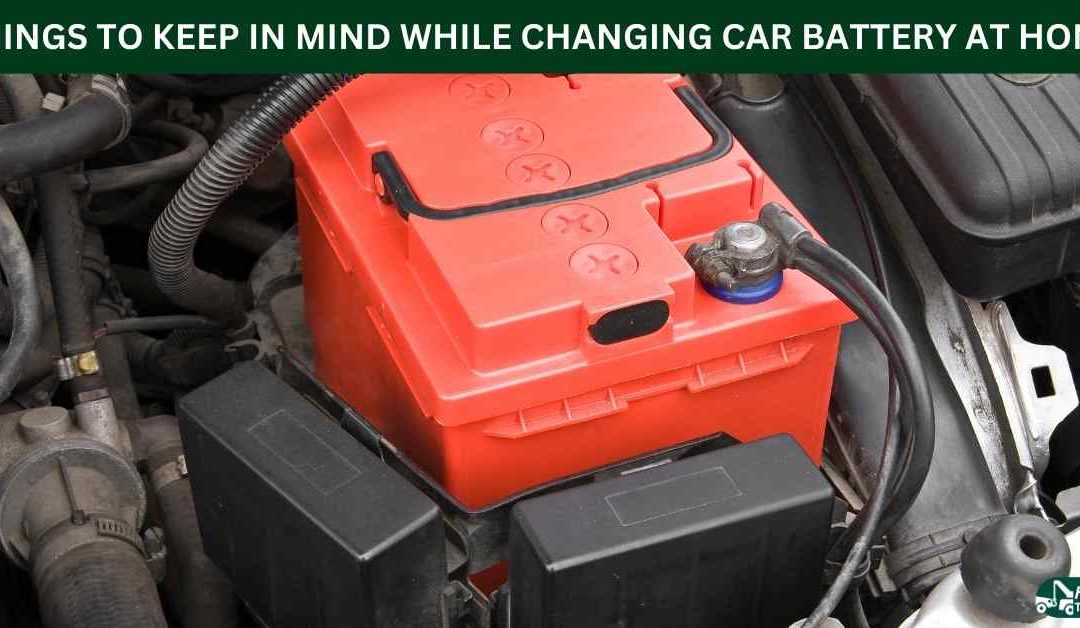Car owners have several fears that they’d like to avoid like the plague. The car’s battery giving up, for example. This is a predicament that no car driver would like to deal with, especially when they are at home. But cars, being the high-maintenance machines, they are, require timely attention and care. Even when you are at home.
Now the fun part, is it possible to conduct a car battery replacement at home? Yes, it is. In this blog, we will tell you how the task can be accomplished. To begin with, a car battery is one of the most abandoned car essentials. Very few of us pay heed to it, and therefore, do not follow a good car maintenance schedule. As a result, you may have to deal with an uninvited consequence – a dead battery.
The battery, after all, is what powers the engine. Pampering the vehicle batteries, like changing the engine oil, all the filters, and other basic service work can guarantee that your car works smoothly and without difficulties.
Car batteries typically have a lifespan of three to five years, which means that if you buy a new car every three to four years, you may not need to replace a dead battery. If you buy used automobiles or maintain your vehicle for an extended amount of time, you will almost certainly need to charge its battery. It is the most common cause for motorists to contact a breakdown service. Fortunately, this is a simple task that you can complete on your own with only a few materials.
Signs Your Battery Needs A Replacement
- If your car won’t start and no warning lights display on the dashboard, you most likely have a dead battery. Try to jump-start the car before purchasing a replacement battery and getting ready to replace it. The engine either takes a long time to start or does not start at all.
- The engine abruptly shuts down when using the power windows, or the windows function at a considerably slower speed than usual. When you switch on the ignition, the dash lights either flicker or become faint. Another symptom is faint dash lights while the engine is idling, which become brighter when the engine is revved.
- In order to function effectively, a battery requires a constant electrical current. The operation of the battery terminals would be hampered if a white or blue residue accumulates around them. A lot of corrosion or oxidation on the battery terminals is another tell-tale indicator that the automobile battery is running low. Examine the battery wires for corrosion and clean them if required. To prevent additional corrosion, use grease or petroleum lubricant under the clamps.
- Some batteries live longer than others, and the frequency with which you drive your car has a lot to do with it. The battery is charged while you drive your automobile. If you drive your car on a regular basis, the battery will likely survive longer than a battery in a car that goes unused for lengthy periods of time. Chronic overcharging (or undercharging), misuse, and extreme vibration are some of the primary reasons of early automotive battery failure.
How to Replace Your Car’s Battery at Home?
Remove The Battery Terminals From The Vehicle:
Typically, the battery terminals are located on the top of the battery, but they may also be located on the side. To uncover the battery and prevent a charge from flowing through it, always detach the negative connection first. Loosen the negative cable clip with your spanner or wrench and slip it off the terminal, tucking it carefully away from other parts. Rep the previous steps to detach the positive terminal.
Remove The Old Battery:
The battery will be secured in place by a clamp at the bottom of the battery or a bar that runs across the top of it. Remove any screws and loosen any battery holders on your vehicle. Now that the battery is loose, you may remove it from the vehicle. Most batteries will have a built-in handle to help with this.
Clean The Terminal Clamps:
Prepare a solution to clean the terminal clamps using a toothbrush or wire brush and ensure they are residue-free. This cleaning method is critical since the residue is frequently quite corrosive, reducing the lifespan of automobile batteries. Examine the battery wires for corrosion and clean them if required. To prevent additional corrosion, use grease or petroleum jelly under the clamps.
Install A New Battery:
You must obtain the proper replacement battery. If you don’t completely charge your new car battery before installing it, you risk overloading and/or ruining the charging mechanism. Lower the new battery into the empty area left by the old one, making sure that the positive and negative terminals are on the right sides. Reattach the clamp or bar that is holding the battery in place by replacing all of the screws.
Inspect The New Battery For Smooth Operation:
The terminals on the new battery may have protective coverings that you must remove. Always start by reconnecting the positive terminal. Put the clamp on the positive terminal, making sure it reaches all the way to the bottom. Start the car and cover the battery. You will need to enter the radio code and any other PINs to restore the electronic systems unless you have a battery memory saver installed.
While we do hope that the aforesaid DIY manual comes in handy to you, if you are a stickler for professional help, then make sure you have got Fawkner Towing Melbourne on your speed dial. We will dash across a technician (or two) to tend to your car battery replacement needs at the earliest. Call us now!
If you are in Tullamarine, Victoria 3043, and looking for a Commercial Towing Services Fawkner, below is the best way to visit us.
Fawkner Towing
18 Emma St, Fawkner VIC 3060
(03) 4050 4989


Recent Comments